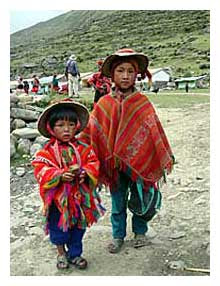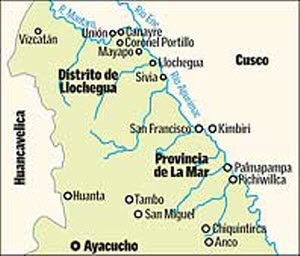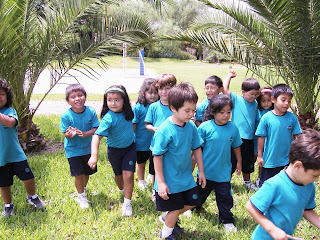Thank you from José...
Thank you from Luís...
Thank you from Hugo...
Thank you from Trinidad...
Thank you from José Luís Lima...
Thank you from Natali...
Thank you from Katherine...
Thank you from Bilela...
 Two of our young people, Natali and Hugo, and their family were diagnosed with TB back in March. But, thankfully, they have now been given the all clear by doctors.
Two of our young people, Natali and Hugo, and their family were diagnosed with TB back in March. But, thankfully, they have now been given the all clear by doctors. 
After visiting the area, 1400km (870 miles) north of the capital Lima, rights lawyers said hundreds of people could not be accounted for. Indigenous groups are insisting that the government be tried for crimes against humanity. One of the lawyers, Ernesto de la Jara, urged the government to begin an independent judicial investigation.
"Dead bodies may be covered up for now but, little by little, the truth will come out and they (the authorities) will have to respond," said de la Jara. But the government denies any wrongdoing and has launched a publicity campaign portraying the murders of policemen as acts of savagery.
"It has been irrefutably proven that the police were tortured and killed," Maria Zavala, Peru's ambassador to the Organization of American States, said in a speech in Washington.
Approximately ten thousand Peruvians marched through the centre of Lima yesterday in support of the Amazonian people. Riot squads had to use tear gas to prevent protesters from reaching the Congress building. Watch this short clip of the chaos that reigned in Lima's streets.
Text coutesy of the BBC and Living in Peru
 At the end of 2007, an estimated 750 thousand Peruvian children were suffering from chronic malnutrition in Peru.
At the end of 2007, an estimated 750 thousand Peruvian children were suffering from chronic malnutrition in Peru. Text courtesy of Living in Peru
The terrorists are said to use children to kill wounded soldiers. “This is something very serious, horrific and inhuman that even the world's ruthless terrorist groups have never done", said Garcia at a press conference. It is something that deserves to be sued at international bodies such as the Organization of American States (OAS), the United Nations and the European Parliament.
Last week, Peru was shocked by national programme Punto Final's footage of children brandishing weapons as members of the Shining Path movement. The platoon was led by a boy of about 10 years old. The programme, shown on Peruvian television channel "Frecuencia Latina", shows the training of 17 children armed with automatic weapons and wearing military fatigues.Text courtesy of Andina News Agency
 Keiko Fujimori is the most popular presidential candidate in Peru, according to a poll by Ipsos, Apoyo, Opinión y Mercado published in El Comercio. 25% of respondents would vote for the daughter of former Peruvian president Alberto Fujimori in the 2011 election, up eight points since August:
Keiko Fujimori is the most popular presidential candidate in Peru, according to a poll by Ipsos, Apoyo, Opinión y Mercado published in El Comercio. 25% of respondents would vote for the daughter of former Peruvian president Alberto Fujimori in the 2011 election, up eight points since August:The recent conviction and sentencing of Keiko's 70-year-old father, Alberto Fujimori, for 1990s death squad killings and forced disappearances have thrust Keiko into the spotlight.
"I think this very harsh verdict will be a boomerang," said Keiko. "If they thought they would defeat Fujimorism with this, they're all wrong." Immediately after the verdict, she called it "vengeful" and predicted public outrage would propel her to Peru's presidency. If elected, she has said she would pardon her father.
Keiko said she has collected the signatures of 700,000 people who back her father and has set a goal of obtaining 1 million. She told reporters that she plans "a great crusade to clear the name of Alberto Fujimori. We want to go to the most remote villages, above all those that suffered the scourge of terrorism and let it be known how unjust this verdict is."
Although she is the most popular presidential candidate for the 2011 election, many analysts say her appeal is limited. Investigative journalist, Gustavo Gorriti, who was abducted in 1992 for criticizing Fujimori's shuttering of the opposition-led Congress and courts, stated that Keiko's candidacy is "essentially single-issue: Fujimori's freedom."
Watch this short clip of Keiko and Fujimori propaganda, just a taster of the huge red writing scrawled on every spare wall-space along the Southern Panamerican Highway:
Source: Ipsos, Apoyo, Opinión y Mercado / El Comercio
Methodology: Interviews with 1,000 Peruvian adults, conducted from Apr. 15 to Apr. 17, 2009. Margin of error is 3 per cent.
 Peru’s ex-president Alberto Fujimori has recently been sentenced to 25 years imprisonment, following a verdict of guilty on four counts of human rights violations.
Peru’s ex-president Alberto Fujimori has recently been sentenced to 25 years imprisonment, following a verdict of guilty on four counts of human rights violations.The sentence, and the verdict, are historic in Peru and the hemisphere, as it is the first time a former president has been tried and found guilty of similar charges. Fujimori has also been sentenced to pay compensation of 62,400 soles to the families of each of the 29 victims of the Barrios Altos and La Cantuta cases, and 46,800 soles to each of the kidnap victims Gustavo Gorriti and Samuel Dyer, a total of approximately $614,000.
Fujimori's eldest daughter, Keiko Fujimori, said she “would not hesitate” to grant her father amnesty if she wins the 2011 presidential elections. Human rights activists have rained heavy criticism on Keiko for this suggestion:
“The congresswoman must be reminded that people who have committed crimes against humanity and have violated human rights, crimes for which her father will be condemned, cannot be pardoned or amnestied nor can they receive any type of political, penitentiary or legislative benefit. This is the core of the matter,” said human rights lawyer Carlos Rivera.
“Fujimori has committed crimes of forced disappearances, and this type of crime cannot be pardoned. The Human Rights Court, in its 2001 sentence in the Barrios Altos case, declared that crimes against humanity and violations of human rights cannot be pardoned or amnestied,” Rivera said. “So someone should tell the congresswoman that the pardon will remain a wish because it’s not viable and it’s not legal.”
Fujimori enacted a controversial amnesty law in 1995 that exonerated all military, police and civilians for any human rights violations committed between May 1982 and June 1995 if they were associated to the counterinsurgency war. The law, argued to be necessary for “national reconciliation,” led to the release of those convicted for the La Cantuta and Barrios Altos massacres.
But in September 2001, the Human Rights Court, at the request of the Inter-American Commission on Human Rights, made an interpretative sentence in which it announced that Fujimori’s Amnesty Laws were without any legal force.
Legislators from different political parties also strongly reacted to Keiko Fujimori’s comments:
“I think that we should evaluate the possibility of writing up a bill that makes it illegal for a person who becomes president to pardon their family members,” said Congressman Juvenal Ordóñez.
Keiko Fujimori is a 32 year-old business administrator and is the probable presidential candidate for Fujimori’s right-wing party “Alliance for the Future”.
Courtesy of The Peruvian Times.
 Almost a year and a half ago I wrote a post about the chaos and extreme poverty that rules in El VRAE, The Forgotten Valley of Peru. Sadly, it seems that nothing much has changed, despite supposed increased government and military presence:
Almost a year and a half ago I wrote a post about the chaos and extreme poverty that rules in El VRAE, The Forgotten Valley of Peru. Sadly, it seems that nothing much has changed, despite supposed increased government and military presence:One of the deadliest terrorist operations in years — suspected to have been planned and staged by a former teacher turned guerrilla — has left 13 soldiers dead in Peru’s remote Apurimac and Ene River Valleys, or VRAE, said Defense Minister Ántero Flores Áraoz.
“The attack carried out with dynamite and grenades occurred on Thursday, and the victims include a captain, a junior officer and 11 soldiers,” Áraoz said during a press conference on Saturday, adding that the remote and jungle-covered VRAE and arduous communication in the region explain why there was such a delay in announcing the deadly ambush.
The attack was staged by “Olga," a close friend of Víctor Quispe Palomino, or “José,” the Shining Path’s political leader in the region.
Alberto Cerrón Palomino, or “Camrade Artemio,” is the only known Shining Path leader from the group’s original directorate never killed or imprisoned. He still commands a force of some 200-300 insurgents in Peru’s central jungle region.
The Shining Path has been largely dormant since 2000. The once 10,000-strong Maoist rebel group nearly brought Peru’s government to its knees during the 1980s with car bombings, assassinations and brazen attacks on police and military outposts. But the group lost momentum following the 1992 capture of its founder Abimael Guzman, who is serving life in a naval prison.
Nevertheless, sporadic Shining Path attacks still claim lives every year.
The recent spike in deadly attacks is largely attributed to a fresh offensive by the Peruvian military, launched last August by Peru President Alan García.
The isolated VRAE is located at the confluent river borders separating the rural departments of Ayacucho, Cusco and Apurímac. The zone is a hotbed for drug traffickers and their hired guns — mostly guerrilla remnants of the Maoist Shining Path insurgency — who regularly carry out deadly roadside ambushes against police and assassinate local officials in retaliation for raids on cocaine processing labs.
Last November, four police officers were killed and four others wounded by Shining Path rebels armed with machine guns on the outskirts of Tingo María, in the Huánuco region of Peru ’s central jungle. Some 40 guerrillas armed with automatic weapons and hand grenades ambushed a four-car police convoy in the coca-producing Huallaga valley at the height of kilometer 23 of the Federico Basadre Highway, as the convoy was leaving Tingo María, on its way toward Pucallpa.
Then, on Oct. 10, 2008, Shining Path guerrillas ambushed a column of military trucks with a bomb and gunfire, killing 13 soldiers and two civilians and wounding 14 other soldiers and three civilians. The rebel attack was the past decade’s deadliest.
Civilians were riding with soldiers in trucks returning to the Cochabamba Grande base in Huancavelica - near the jungle-covered VRAE, where about 30 percent of Peru’s coca leaf is harvested – when they were ambushed near the town of Tintaypunco. Rebels detonated a bomb as the convoy rounded a bend, and then opened fire with automatic weapons. In days prior to the ambush, the army claimed that five rebels were killed in the area, and that 15 others were captured.
On Nov. 16, four police were killed in another ambush by narcoterrorists on the road just outside the city of Huanta, in the department of Ayacucho. The highway patrol was attacked by about 30 men armed with machine guns and rifles. At the time, then Minister of Interior Remigio Hernani said the attack appeared to be in revenge against continuing police raids in the area to combat illegal coca and cocaine production.
According to Jaime Antezana, a sociologist and expert in illegal coca and cocaine production, these attacks indicate that the anti-narcotics program is not achieving its objectives. He reports 21 rebel ambushes since July 2003. These attacks have killed a total of 35 soldiers, 23 police and more than a dozen civilians.
Peru was once the world’s leading producer of coca. But the country slashed its production by 70 percent between 1995 and 2001 primarily because of low coca prices, interdiction, forced eradication of coca fields and programs that encourage farmers to grow alternative crops. But by 2002, the number of hectares used to illegally grow coca in Peru increased as efforts to eradicate the crop in Colombia forced production southward.
This can be explained by the balloon effect, or the drug fields’ tendency to shift elsewhere and sometimes to smaller and harder-to-reach plots in response to local eradication campaigns, and the fact that for farmers, the coca harvest provides more money than any other crop: up to five times as much can be earned for a kilogram of coca than for a kilogram of coffee.
In June 2008, a study conducted by Peru’s National Commission for the Development of Life without Drugs, or Devida, and the United Nations Office on Drugs and Crime indicated that coca crops had increased by 4.5 percent in 2007 and that approximately 92 percent of Peruvian coca production is destined for the fabrication of cocaine paste and cocaine hydrochloride.
In the VRAE, production of the alcoloid-packed leaf has risen steadily from 14,170 hectares in 2002 to 16,019 hectares last year, according to the United Nations Office on Drugs and Crime.
Courtesy of The Peruvian Times
 Last Tuesday, I went to visit Bilela at her new job at Colegio Euroamericano, Pachacamac.
Last Tuesday, I went to visit Bilela at her new job at Colegio Euroamericano, Pachacamac.











:: LINK-ME ::
